3-Month-Old Baby Development and What to Expect
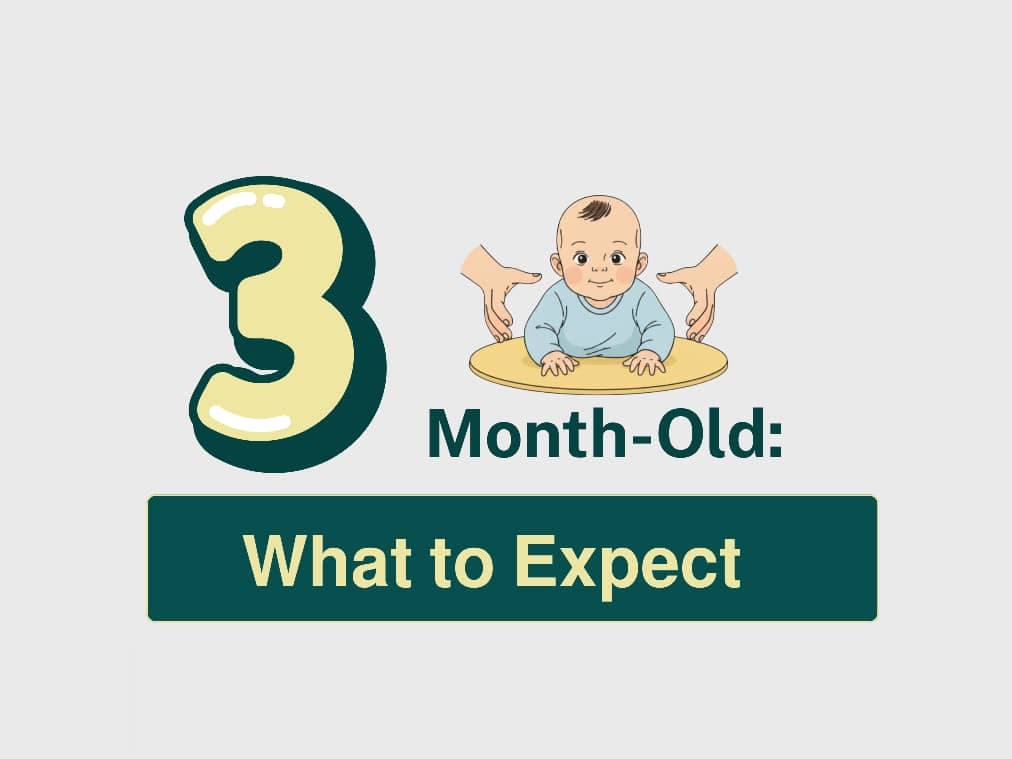
Written by Mindsmaking Medical Writer
Fact Checked by Mindsmaking Professionals
24th, November, 2025
Watching your newborn hit the 3-month-old baby’s development milestone is both exciting and rewarding. From new baby skills to big smiles, each change brings fresh joy.
Nothing comes close to the joy of watching your baby reach the 3-month-old development milestone. Can you believe it? From those sleepy newborn days, your baby has now grown into a more active, alert, and interactive cutie. This milestone belongs to you just as much as it does to your baby.
Of course, motherhood is still that mix of sweet and challenging moments. One minute you are melting at those smiles, giggles, and sound experiments, and the next you are overwhelmed by the constant need for feed and sleep. Now, see how far you and your baby have come in just 3 months. Certainly, this is just one of the many growth milestones that are to come.
Remember, no two babies are the same each one grows at their own pace. Don’t feel pressured to rush your 3-month-old’s development just because another baby’s chart looks different. Instead, focus on what is typical for every 3-month-old baby to better support your baby's development.
Key Takeaways
At 3 months, babies become more alert and interactive. Development looks different for every child, so focus on progress, not comparison.
Head control improves, reflexes fade, and movements become intentional. Babies may push up, grab toys, and explore with their hands and mouth.
Newborn reflexes like startle, rooting, and stepping fade at 3 months, making room for purposeful movement and control.
Babies coo and gurgle, turn toward voices, follow moving objects, and study facial expressions more closely at this stage.
Your baby is beginning to connect actions and reactions, recognize routines, and show memory by responding to familiar people and objects.
Smiles become social, attachment grows stronger, and babies respond to familiar faces and voices with comfort and joy.
Most babies feed 6–8 times daily and sleep 14–16 hours, with night sleep becoming longer and naps starting to follow a rhythm.
At the 3-month check-up, growth, motor skills, and social responses are reviewed. Immunizations may also be given.
Simple play and interactions like tummy time, reading, and responding to coos support early motor, social, and language development.
By 3 months, babies move from reflexes to intentional actions, showing smiles, coos, and playful interactions that mark growth.
Physical and Motor Development
By the time your baby reaches the 3-month-old milestone, you will notice big changes in the way they move, play, and interact. Here’s what to expect:
Physical and Motor Development

Head control
Your baby’s head control is getting stronger. They can now hold their head steady when supported, raise their head briefly while sitting, and even push up their chest during tummy time. If you are lucky, you may catch a surprise roll from tummy to back. Do not blink because this can happen very fast.
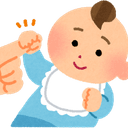
Baby motor skills
Reflexes are giving way to more intentional moves at 3 months. Those tiny hands may open wider, clap together in front of their face like they are planning world domination. They can also grab a toy, shake it proudly, and drop it without a second thought. Almost everything they grab will head straight to the mouth, which is totally normal at this stage.
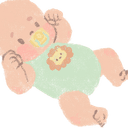
Leg strength
At 3 months, your baby’s legs start showing off. Whether on your lap or on the floor, they may kick and push down as if trying to stand. No, they’re not ready to sprint just yet, but each kick is a stepping stone toward bigger baby development milestones
Reflexes
Right after birth, your baby came with natural reflexes. These are some automatic little reactions they did not even plan. A bright light makes them scrunch their face, a sudden movement sets their arms flying out, and a brush of the breast against their lips leads to instant sucking. All of it just happens on its own. By the time your baby reaches the 3-month milestone, many of these reflexes begin to fade. This is making room for more intentional moves.
Startle (Moro) reflex: That dramatic “I’m falling!” reaction that your baby shows when they hear loud noises or sudden movement is slowing down. Instead of arms shooting out like they are on a roller coaster, you will start seeing smaller, calmer flinches.
Rooting reflex: In the early days, stroking your baby’s cheek made them turn and open their mouth like food was about to magically appear. At 3 months, this reflex fades as they gain better control and do not need that built-in food tracker anymore. So, they may no longer turn at every stroke.
Stepping reflex: Those tiny “marching steps” your baby made when you held them upright? Yes, they are usually cute, but short-lived. This reflex also fades now, paving the way for real motor skills that will come later.
Here is the exciting part, your baby’s moves are no longer random wiggles at 3 months. They can reach for toys, grab them, and, without hesitation, shove them straight into their mouth. These purposeful movements are a big sign of baby development and growth.
Communication and Sensory Development
Your baby is learning to vocalize and use their senses better at 3 months old. So, you can catch them in the act of making vowel-like sounds like “aaah,” “oooh,” or “eeeh.” Soon enough, their cooing and gurgling will develop into babbling.
Your baby's eyes and ears are also developing with the rest of their body. So, sensory development also takes place at 3 months. If you have not started paying attention, it is time to watch out. Your baby will start hearing your voice now. If you speak, they may turn towards the direction of your voice. With their eyes, they can study your facial expressions more closely, like you are their favourite TV show at the moment. They may also follow any moving object with their eyes.
Read This Next
No posts available
Cognitive Development
By 6 months, your baby’s brain is busy connecting actions, sounds, faces, and routines. They are no longer just reacting, they are starting to show curiosity, remember, and even test little “theories” about how the world works. Here are some signs of brain development at this stage.
- Your baby may shake a rattle or drop a toy just to see what happens, showing they are learning cause and effect.
- They might get excited when they see a bottle or when you prepare to nurse, proof that they recognize daily routines.
- They may stare at bright colors, bold shapes, or simple patterns, which strengthens their vision and focus.
- Your baby may reach for familiar faces with a smile while acting shy or cautious around strangers.
- They might show memory skills, like crying when you leave or cheering up the moment you return.
- They may bang toys together, reach for hidden objects, or observe how things move, which are early signs of problem-solving.
Social and Emotional Development
Already, your baby has become more awake and active at 3 months old. This means you both now have more opportunities to interact with each other. At this stage, smiling becomes a way of social interaction rather than just a reflex. Your baby may smile because they know you already and have bonded with you, especially after breastfeeding. Once in a while, they may smile back at you after you talk to them. This is the beginning of laughter, social interaction, and connection for your baby. When your 3-month-old baby sees a familiar face or hears them speak, they can respond with a smile too.
Gone are the days when every cry meant hunger. Now, your baby fusses when they are bored or when they want attention, and calms down when comforted by you. Sometimes, all it takes is your familiar voice, a gentle cuddle, or even your smile to ease their little worries. This is also the time when attachment grows stronger. Your baby now knows the difference between you and strangers. They may reserve their biggest smiles for you, stretch out their tiny hands when you come close, or quiet down just because you picked them up. These are not small wins; they are growth milestones that show your baby feels safe.
Feeding and Sleeping
At 3 months, your baby is still very much a foodie. Expect around 6–8 feeds per day, depending on whether they are breastfeeding or bottle-feeding. Sometimes, it may feel like they just finished one meal before demanding another, but do not worry, it is all part of their growth spurt. Feeding at this stage is not just about filling their tiny tummy; it is also about comfort and bonding.
Once your baby reaches their 3-month-old development milestone, sleep will become a little more predictable. Your baby may begin to sleep in longer stretches at night. This may be anywhere between 4 to 6 hours at a time. That means you might finally get a chance to rest without waking up every other hour. Your baby's total sleep in a day can still be around 14 to 16 hours.
Mostly, the difference with 3-month-old babies is that naps are starting to follow a more regular rhythm. This will give you a bit of time to work during the day and rest at night. Take advantage of your baby's little windows of rest, whether it is to catch a nap yourself, get some chores done, or just enjoy a quiet cup of tea.
Important Milestones to Note
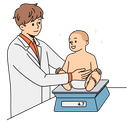
Doctor’s Check-Up
During your baby's 3-month checkup, your pediatrician will measure your baby’s weight, length, and head circumference to track growth. They will also check head control, muscle strength, and early motor skills to ensure development is on track.

Immunizations
Depending on your local schedule, vaccines may be given at this visit. If not, your doctor will guide you on what to expect at the next appointment.

Development Review
The doctor may observe how your baby responds to sounds, follows objects with their eyes, or interacts with faces. These are important signs of sensory and social development.
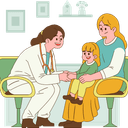
Parent Preparation
Bring questions about feeding patterns, nap routines, or anything you have noticed (like head lifting or cooing) to the doctor. These visits are not just about measurements; they are a chance to support your baby’s overall growth and learning.
What You Can Do to Support Development
At this stage of your 3-month-old baby’s development, little actions make a big difference. Simple daily routines can help strengthen their body, advance their senses, and build the foundation for exciting milestones ahead. The best part of this is that most of these activities feel like play, even though they are secretly workouts and brain boosts in disguise. Here are simple ways to help your baby’s development.
- Give your baby short daily sessions of tummy time to build neck, arm, and head strength. Keep them engaged with a toy or your smile.
- Offer safe, colorful toys to grasp, shake, and explore perfect for boosting motor skills and coordination.
- Talk, sing, and read aloud to your baby to comfort them and encourage coos, babbles, and early language development.
- Spend time in gentle face-to-face play, letting your baby study your expressions and build stronger social bonds.
- Respond to coos and sounds to show your baby that communication goes both ways, laying the foundation for conversations later on.
When to Call the Doctor
Every baby grows at their own pace, but some signs should not be ignored. Call your pediatrician if your baby struggles to hold their head steady when supported, does not smile or respond to sounds, or has feeding difficulties that affect weight gain.
Also, check if your baby has fewer than four wet diapers daily, shows signs of breathing difficulties, or develops a fever. It is always better to get reassurance from your doctor than to worry silently. Remember, you are not overreacting, you are only protecting your baby.
A Word From Mindsmaking
Look at your baby now compared to those first newborn weeks. From wobbly reflexes to intentional smiles, your 3-month-old has already ticked off many baby development milestones. This phase is filled with smiles, giggles, playful kicks, and endless bonding moments.
No matter how exhausting it feels, you are doing an amazing job. Each cuddle, feed, lullaby, and interaction is important to your baby’s future. So, celebrate your newborn’s progress and make memories as much as possible.

Was this article helpful?
How many stars are you giving this article?
Leave a comment
Your email address will not be published.